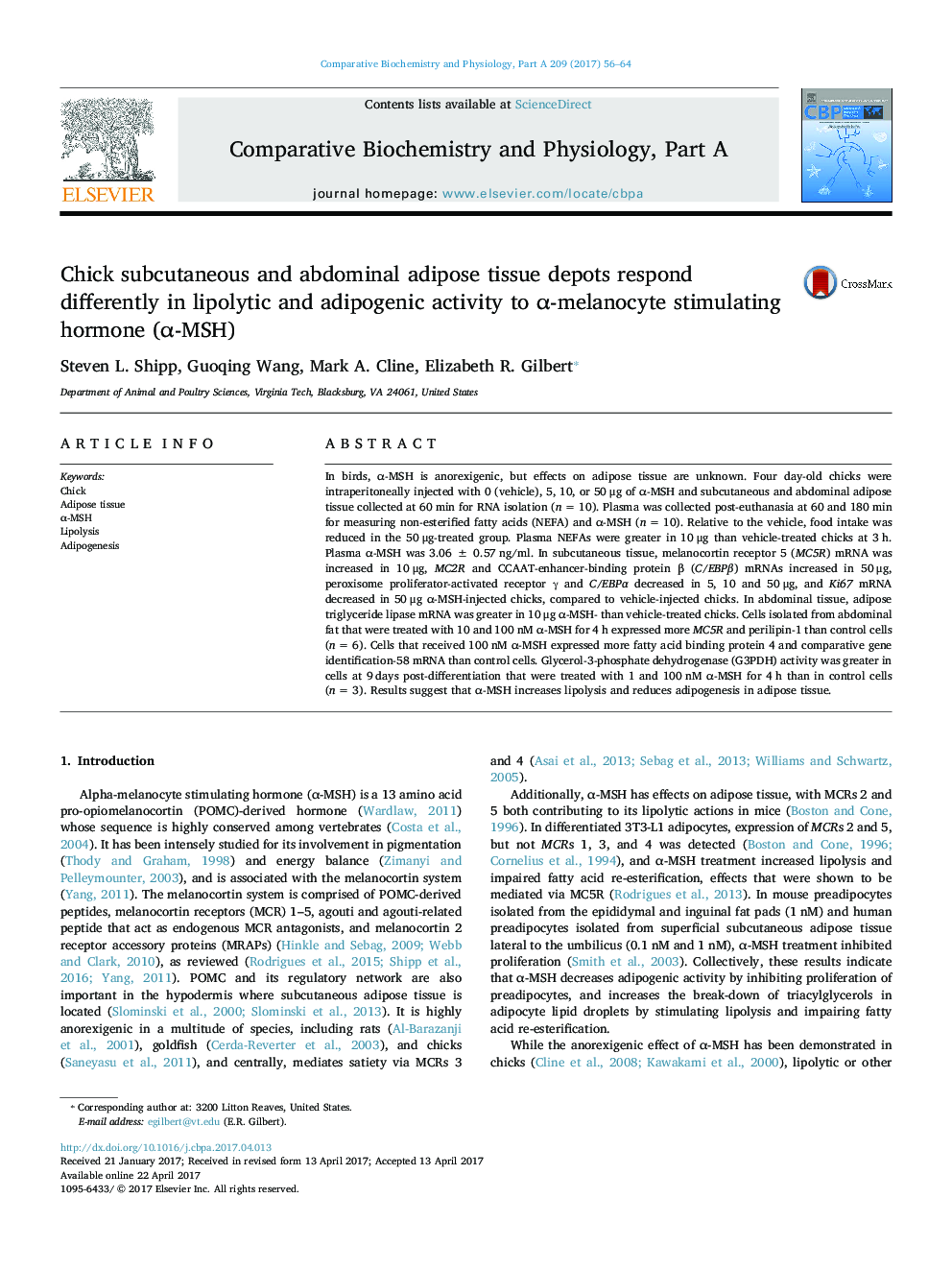| Article ID | Journal | Published Year | Pages | File Type |
|---|---|---|---|---|
| 5510296 | Comparative Biochemistry and Physiology Part A: Molecular & Integrative Physiology | 2017 | 9 Pages |
In birds, α-MSH is anorexigenic, but effects on adipose tissue are unknown. Four day-old chicks were intraperitoneally injected with 0 (vehicle), 5, 10, or 50 μg of α-MSH and subcutaneous and abdominal adipose tissue collected at 60 min for RNA isolation (n = 10). Plasma was collected post-euthanasia at 60 and 180 min for measuring non-esterified fatty acids (NEFA) and α-MSH (n = 10). Relative to the vehicle, food intake was reduced in the 50 μg-treated group. Plasma NEFAs were greater in 10 μg than vehicle-treated chicks at 3 h. Plasma α-MSH was 3.06 ± 0.57 ng/ml. In subcutaneous tissue, melanocortin receptor 5 (MC5R) mRNA was increased in 10 μg, MC2R and CCAAT-enhancer-binding protein β (C/EBPβ) mRNAs increased in 50 μg, peroxisome proliferator-activated receptor γ and C/EBPα decreased in 5, 10 and 50 μg, and Ki67 mRNA decreased in 50 μg α-MSH-injected chicks, compared to vehicle-injected chicks. In abdominal tissue, adipose triglyceride lipase mRNA was greater in 10 μg α-MSH- than vehicle-treated chicks. Cells isolated from abdominal fat that were treated with 10 and 100 nM α-MSH for 4 h expressed more MC5R and perilipin-1 than control cells (n = 6). Cells that received 100 nM α-MSH expressed more fatty acid binding protein 4 and comparative gene identification-58 mRNA than control cells. Glycerol-3-phosphate dehydrogenase (G3PDH) activity was greater in cells at 9 days post-differentiation that were treated with 1 and 100 nM α-MSH for 4 h than in control cells (n = 3). Results suggest that α-MSH increases lipolysis and reduces adipogenesis in adipose tissue.
